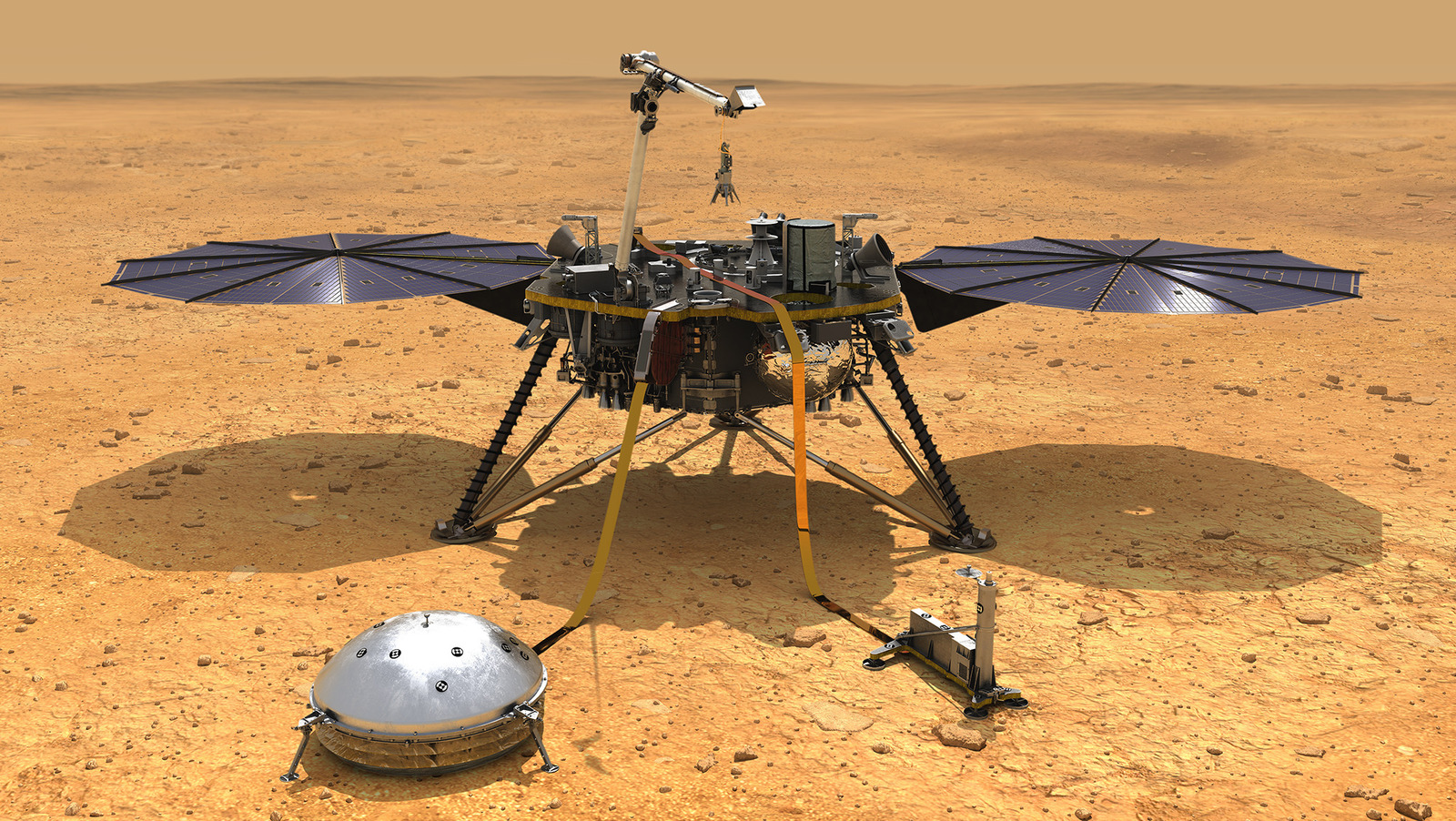How A NASA Lander Heard Its First Meteoroid Impact

Mars is covered in many craters for the same reason that the moon is. There are tons of bits of space rock floating around, and over millions of years, many of these pieces of rock crash into moons or planets and leave behind impact craters. Earth has been crashed into by many meteoroids too, but not so many impact craters remain here. That’s because Earth has plate tectonics, which means that the surface of our planet is constantly renewed, so impact craters don’t stick around as long. Mars, like the moon, does not have plate tectonics.
Another important difference is in atmosphere. Earth’s thick atmosphere means we have plenty of wind that’s causing erosion, which gradually wears down craters over time. The moon has no atmosphere, and Mars has only a very thin atmosphere, so there is much less erosion.
All of this means that impact craters hang around a lot longer on Mars than on Earth, and studying them is a key way we can learn about the planet’s history. In fact, according to JPL, scientists using InSight were surprised they didn’t detect more impacts than just these four because Mars is close to the asteroid belt in our solar system. However, from the impacts they did detect, they were able to see things like how the ground tilts when an impact happens.
“We’re learning more about the impact process itself,” said lead author of the study Raphael Garcia of Institut Supérieur de l’Aéronautique et de l’Espace in France. “We can match different sizes of craters to specific seismic and acoustic waves now.”
For all the latest Games News Click Here
For the latest news and updates, follow us on Google News.
